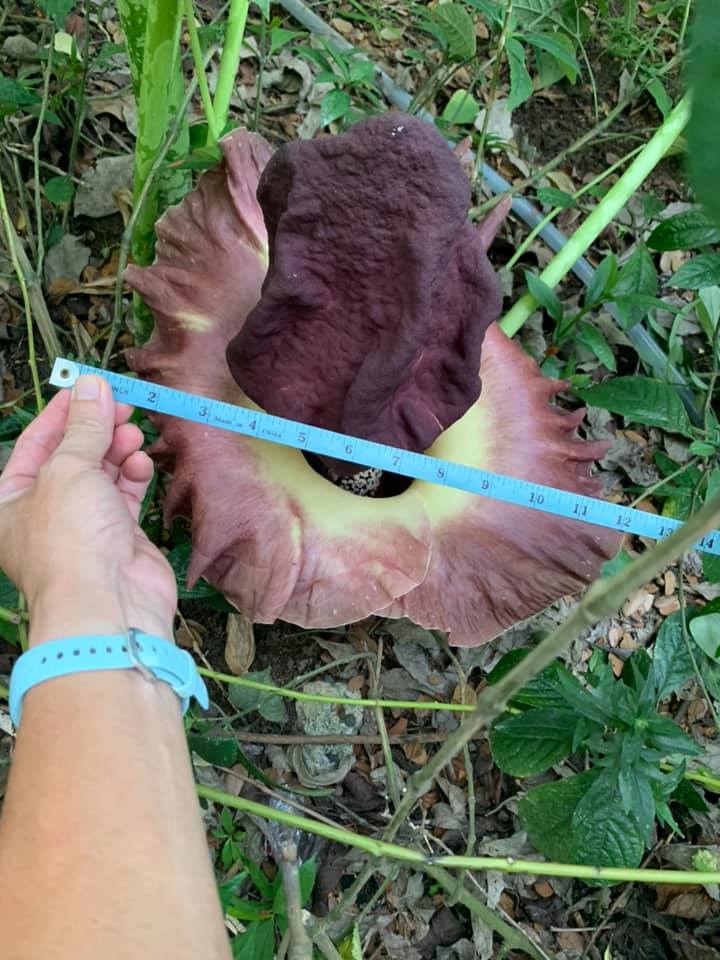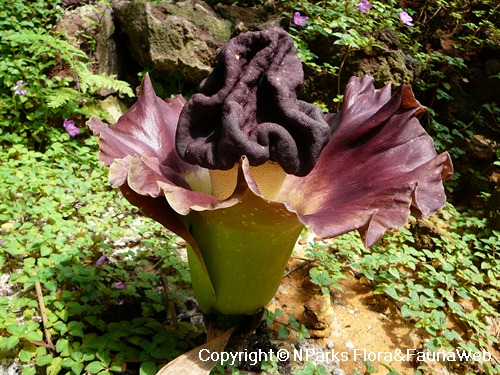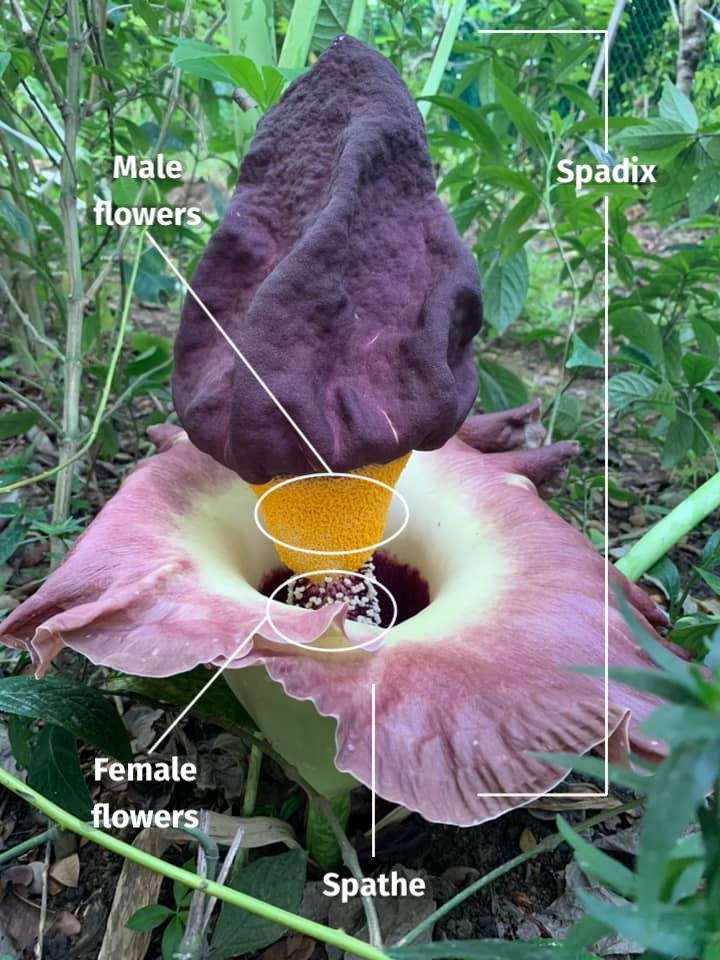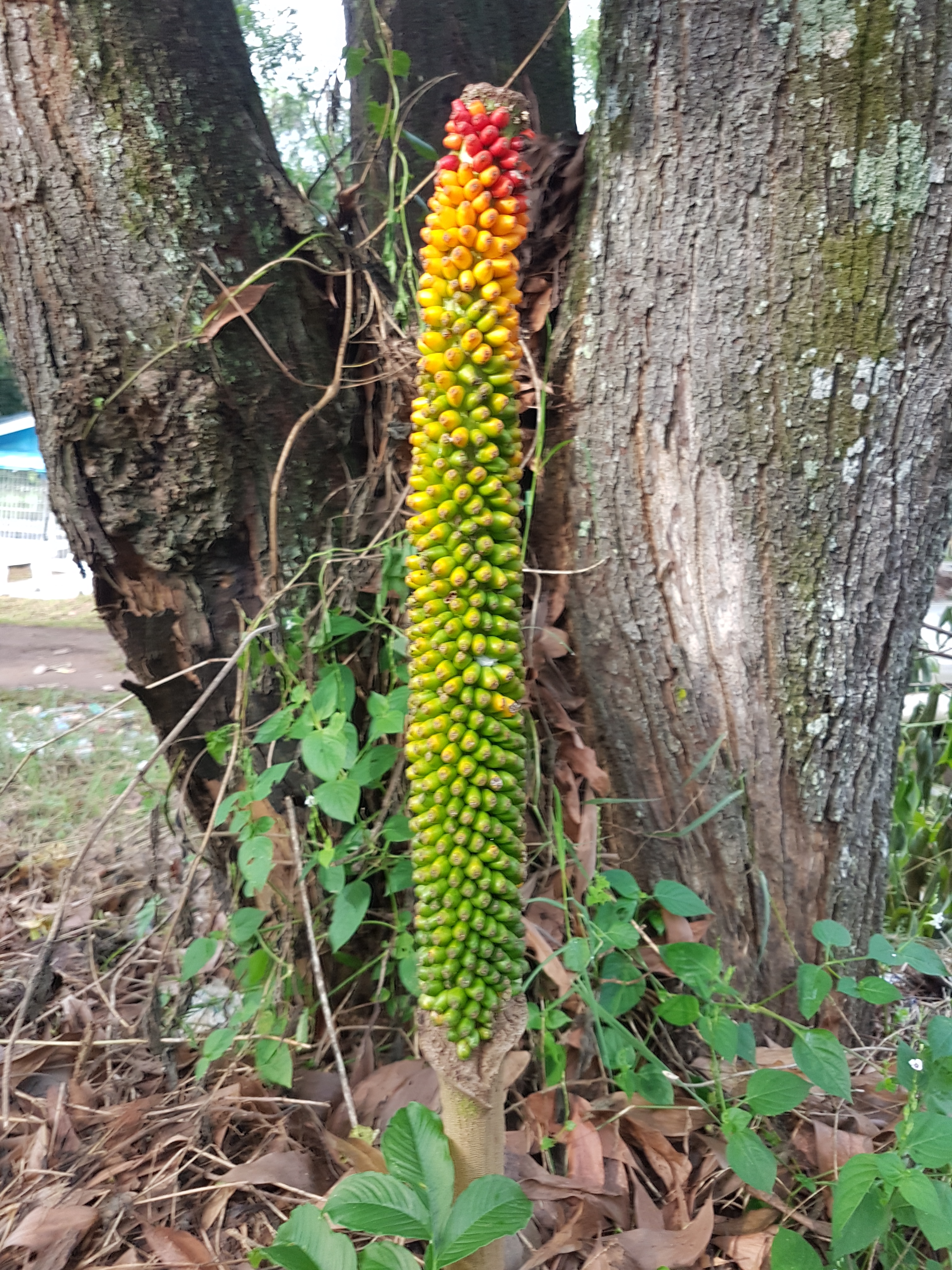Follow us on Telegram for the latest updates: https://t.me/mothershipsg
A phallic wild flower with a rather unusual scent has been spotted in Sembawang recently.
Named appropriately for the pungent decaying meat scent that it gives off while in bloom, the corpse flower was pictured by Member of Parliament for Sembawang Group Representation Constituency Lim Wee Kiak in his Facebook post on Jun. 6, 2021.
Corpse flower at Sembawang
The corpse flower releases a scent akin to decaying corpses to attract carrion flies, or blow flies, and beetles for pollination.
At the time of his sighting, Lim told Mothership that he did not notice a scent from the flower while he was wearing his face mask.
According to Lim, the flower spanned around 45 to 50cm in diameter and was wild.
 Image from Lim Wee Kiak/FB.
Image from Lim Wee Kiak/FB.
Another resident in Sembawang, Markus Koo, who had originally sighted the flower at Block 338 Sembawang Crescent, told Mothership that he did not get a whiff of the corpse flower's characteristic scent.
Koo also said that the flower had just bloomed on Jun. 6, 2021.
Elephant foot yam
The corpse flower belongs to the elephant foot yam plant, Amorphophallus Paeoniifolius.
In Ancient Greek, Amorphos means misshapen while phallos means phallus; the name put together alludes to the flower's intriguing shape.
 Image from Nparks website.
Image from Nparks website.
The flower comprises a single spadix, a flower head containing all of the flower's parts, and is crowned with a large bulbous knob.
The tip of the flower secretes a mucus. The tip is also where the scent of decaying corpses emanate from.
The flower is encircled by its spathe – a large and funnel shaped sheath that tapers towards the bottom of the flower.
Both female and male flowers are found on the lower and top parts of spadix respectively.
 Image from Lim Wee Kiak/FB.
Image from Lim Wee Kiak/FB.
After the flowers are pollinated, the rotting corpse scent will fade and the plant will start to bear round berries.
As the berries mature, their colours will transit from green to red.
 Image from Obsidian Soul/Wikimedia Commons.
Image from Obsidian Soul/Wikimedia Commons.
Flowers from the elephant foot yam plant can grow up to 40 to 50cm tall and 30 to 40cm wide.
Native to several regions
Elephant foot yam plants are native to regions like India, China, Taiwan, Indochina, Philippines, Malaysia, Indonesia, Papua New Guinea and Northern Australia.
Before you go sniffing for the yam, do note that it is high in acridity and contains calcium oxalate crystals, which are irritants.
If not properly prepared, it can cause burning and stinging sensations on one's skin and mucuous membranes.
The yam, however, is edible and is often found in Indian markets and used in Indian cuisine.
According to NParks, people with rheumatism, arthritis, gout, kidney stones and hyperacidity should exercise caution when consuming these tubers.
Top image from Lim Wee Kiak/FB
If you like what you read, follow us on Facebook, Instagram, Twitter and Telegram to get the latest updates.

